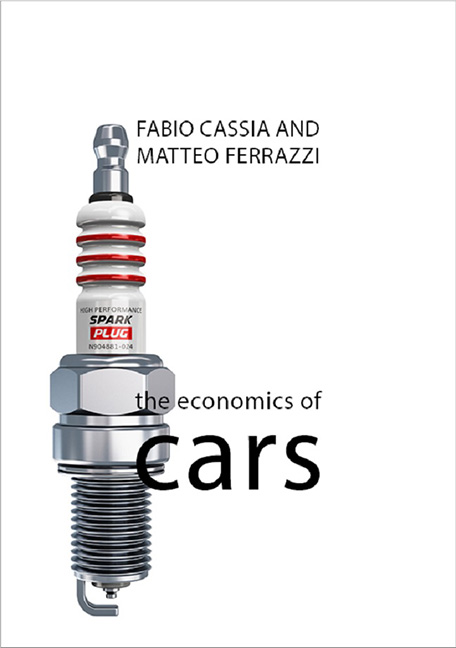2 - Automotive Production: How and Where
Published online by Cambridge University Press: 24 August 2023
Summary
“I believe in the horse. The automobile is only a passing phenomenon.”
Kaiser Wilhelm II, 1905A small number of producers; huge volume
Stagnant demand, saturated markets, overcapacity: for decades in the Western world, and in Europe in particular, litanies about the automotive industry have been the norm. As a corollary, corporate restructuring, employee layoffs and factory closures have followed in familiar succession, while alliances and mergers – in attempts to survive the competition – become the rule of the game, together with the disappearance of companies and brands.
Paradoxically, however, vehicle production (cars and light vehicles) has never been greater than in the first part of the twenty-first century. Yearly vehicle production had reached 10.5 million in 1950 and 29 million twenty years later. If we exclude the nadir of the economic crisis (2008/9), at the beginning of the twenty-first century a series of production records were registered from one year to the next. Almost 57 million cars were produced worldwide in 2001; 59 million in 2002; 61 million in 2003; 63 million in 2004 and so on. In 2010, when the global financial crisis was still rampant, another all-time record was reached, which was repeated the following year, when 80 million cars were produced. In 2012, it was 84 million and, in 2016, over 95 million. Around a quarter of them consists of commercial vehicles (light vehicles and trucks), while the remaining three quarters are represented by passenger cars.
Which companies are able to organize such mass production and massive distribution? Where are these vehicles produced? The automotive sector is extremely concentrated at global level. The top five largest companies (automotive companies are often referred to as OEMs, Original Equipment Manufacturers) represent almost a half of global production, and the top 15 companies more than 80 per cent. In all likelihood, the sector will be even more concentrated in the future. According to many analysts, in fact, production is still too fragmented and further consolidation is likely. Economies of scale are playing a relevant role: with higher production volumes (and sales), average unit costs decrease, making production platforms work at their full capacity and OEMs profitable.
- Type
- Chapter
- Information
- The Economics of Cars , pp. 13 - 34Publisher: Agenda PublishingPrint publication year: 2018



